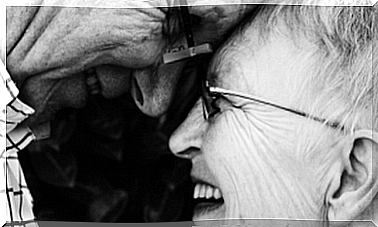Persistent Depressive Disorder: Symptoms

Symptoms of persistent depressive disorder, or dysthymia, indicate that we are faced with more than just chronic sadness. Very often this clinical condition is the antechamber of a form of major depression. Yet, the worst aspect is that the person can carry on for months, even years, this asphyxiating pain, without however knowing its origins, but seeing the quality of his life worsen.
If people with dysthymia underwent an MRI, they would discover a very interesting aspect. The brains of patients with depression (in a general sense, that is, with a negative mood), shows a different activity. Specifically, there is an imbalance: the areas responsible for regulating thinking, sleep, appetite and even decision making appear slower.
These psychological realities are not observable from the outside. Persistent depressive disorder does not express itself with obvious symptoms, it does not cause fever or make us completely unable to go to work or to relate to others; yet, there it is. And life hurts and slows down, it becomes difficult and dark when the dysthymia coexists with the person as an ever-present co-driver who takes control of any situation.
Having said this, it is essential to learn to recognize the signs. An immediate approach prevents this state from worsening, given that – as clinical studies reveal – the risk of leading to major depression is 50%.

What are the symptoms of persistent depressive disorder (or dysthymia)?
In the latest edition of the Diagnostic and Statistical Manual of Mental Disorders (DSM-V) a new nomenclature has been attributed to dysthymia, or dysthymic disorder: persistent depressive disorder. This expression describes a clinical condition which – although not as serious as major depression – is characterized by a long duration: between 6 months and two years.
The study conducted at the University of California by doctors CT Hoepner and M. Zetin reveals that it would be a mistake to consider it a form of minor or mild depression.
Therefore, while major depression presents an intense or limiting symptomatology, dysthymia has less debilitating, but chronic effects. These are: malaise, pain and fatigue that recur day after day, and month after month, to the point of deeply undermining the soul.
It is therefore not a minor ailment. On the other hand, it is interesting to note that dysthymia is often genetic in nature and mainly affects women. In some cases, there are those who affirm that this state of mind is nothing more than the projection of predominant feelings during childhood. Accepting this aspect as determining is a grave mistake, as is normalizing perennial sadness.

Symptoms of persistent depressive disorder (or dysthymia)
Although the symptoms of depression present differently, common patterns tend to emerge on which the main diagnostic criteria are based.
Facts, subtle brushstrokes, sensations and moods that, while not serious or invalidating in intensity, end up becoming so due to their persistence.
Therefore, the person may have no difficulty in going to work, relating to people or pursuing his hobbies, but he carries out these activities because he “has to” ; she does not feel motivated and does not feel a pleasant sensation while doing them. Below, let’s see some symptoms of persistent depressive disorder:
- Eating disorders: loss of appetite or overeating.
- Get little sleep or sleep most of the day.
- Lack of energy, constant fatigue.
- Problems associated with concentration or decision making.
- Poor motivation.
- Social camouflage: tendency to limit oneself to doing what others do, to laugh when they laugh, to participate in some event, to follow conversations with apparent interest. of all this sounds interesting or pleasant.
- Discomfort, pain and negativity.
- Periods in which bad mood predominates.
- Dysthymia makes us very critical of ourselves, it causes low self-esteem to envelop almost everything ..
These symptoms must persist for at least two years.
Treatment for dysthymia
Once the symptoms of persistent depressive disorder have been identified, it is essential to seek professional help. Well, one thing to take into account is that men generally resist asking for help.
This condition does not heal on its own. It is not a negative phase of transition nor a bad period. Instead, it is a virus that installs itself and remains until it causes debilitating states.
The most common therapeutic approach is twofold. In some cases it will be necessary the pharmacological approach that foresees :.
-
- SSRIs (selective serotonin reuptake inhibitors).
- TCA (tricyclic antidepressants).
- IRSN (selective serotonin and norepinephrine reuptake inhibitors).
- In any case, psychotherapy will be necessary, with particular preference for cognitive-behavioral therapy given its effectiveness.
Other approaches will also be useful, such as support groups, conversational therapy, mindfulness, interventions to improve sleep quality, nutrition, social relationships.

Finally, each person can benefit from a particular treatment. One way or another, persistent depressive disorder can be addressed and the prognosis is usually positive.
We must never hesitate to ask for help: a few simple gestures can open the doors of that well-being that we deserve.









